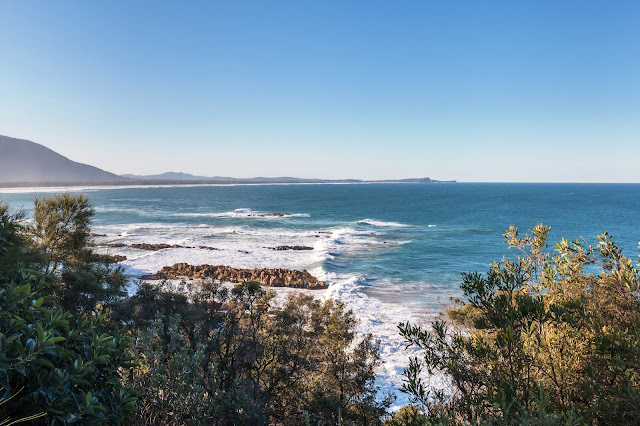Diamond Head Loop Walk: 4.3 km loop, Grade 3.
Metcalfes Walking Track: 700 meters one way, Grade 3.
We combined the Forest Walking Track, Diamond Heed Loop, and Metcalfes Walking Track into a loop of about 6.5 kilometers starting from Diamond Head Campground and walking via Indian Head Campground, Kylies Hut and Kylies Campground.
 |
| Forest Walking Track |
 |
| Young Eastern Grey Kangaroo having a scratch at Indian Head Campground. |
 |
| Kylies Hut |
 |
| Brackish creek on Metcalfes Walking Track. |
 |
| Red Wattlebird. |
 |
| Little Wattlebird. |
 |
| Amenities at Kylies Beach Campground. |
 |
| Yellow-tailed Black Cockatoo eating a banksia cone. |
 |
| Photographing birds on Kylies Beach. |
 |
| Sooty Oystercatchers on the rocks at Kylies Beach. |
 |
| We climbed up from Kylies Beach to rejoin the track. |
 |
| View looking south from Kylies Lookout. |
 |
| The Natural Arch |
 |
| Diamond Head Loop Walking Track. |
 |
| Looking south on the Diamond Loop Walking Track. |
 |
| More coastal rock formations. |
 |
| A Mapping Authority marker on Diamond Head. |
 |
| Walking through heath; looking south on the Headland Walk. |
 |
| Looking north from the Headland Loop Walk. |











































